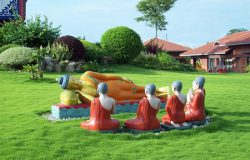

Lumbini – Birth Place of Lord Buddha


Lumbini – Birth Place of Lord Buddha
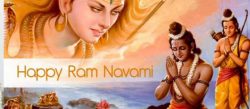

Happy Ram Navami
Festivals of Nepal: Ram Nawami
Ram Nawami is celebrated in the mid of Chaitra (March/April) as Lord Ram’s Birthday. It is celebrated with much pomp at Janaki temple in Janakpur city, which lies in southern Nepal. Lord Rama is regarded as another incarnation of Lord Vishnu. Nepalese, therefore, have deep belief and extreme faith in him. His strength, courage, purity of heart, compassion, sweetness of speech, serenity and abiding wisdom made him the favorite idol of his people. His life story is told in the much beloved epic- the “RAMAYANA”.
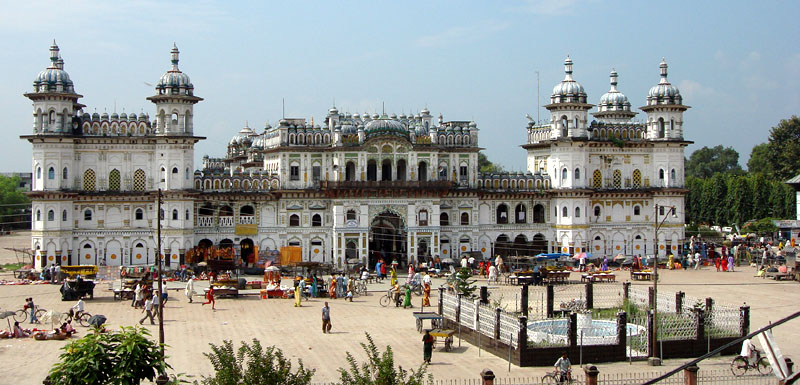
Janaki Mandir of Janakpur Dham
Before the birth of Sri Ram, the world was under the reign of an evil and fiendish demon king Ravana. Ravana had pleased Lord Brahma, who bestowed on Ravana the boon that no God or demon could kill him. This gave Ravana immunity from everyone except a mortal man. Thus, to save the world from evil, Lord Vishnu took birth as Ram in the city of Ayodhya. King Dasharath, who ruled over Ayodhya, had one misery – his three queens bore him no sons. Lord Vishnu gave them nectar to drink, and soon the eldest produced Ram, the next gave birth to Bharat and the third had twins, Lakshman and Shatrughana. All four of them became exemplary youths but it was Ram who grew in grace and virile beauty.
Source: SamratNepal
Contact Us:
E-mail: sales@samratnepal.com
Phone: +977 – 9851030564
Location: Gairidhara, Kathmandu, Nepal.
Website: www.samratnepal.com
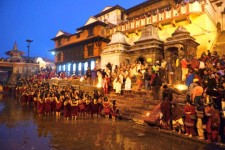
This day is the celebration dedicated to the Lord Shiva which falls on the Trayodashi of the month Fagun (February/March).
Nepal is the only Hindu kingdom in the world and thus the land of Lord Shiva, Lord of all Lords, for here you can feel his presence everywhere. Even in the sacred texts of the Hindus it has been stated that Mt. Kailash in the Himalayas is the abode of Lord Shiva or Mahadeva as he is also known. Shiva the Destroyer of Evil is among the most praised and worshipped of all the gods in the Hindu religion. Hindus all over the world know him through different names and forms. The country has thousands of idols and monuments, which glorify his name, the most common one being the Shiva Linga or the phallus of Shiva that represents him. For it is the Shiva linga that Hindus regard as the symbol of creation, the beginning of everything. Shiva Ratri is the night of Lord Shiva when He himself was created by His own Divine Grace and Hindus all over the world celebrate this day with a lot of zeal and enthusiasm. Shiva Ratri literally means ‘ the night consecrated to Shiva’. This auspicious festival falls on the fourteenth day of the waning moon in the month of Falgun, (February – March in the Gregorian calendar ). The temple of Pashupatinath in Kathmandu which is considered as one of the holiest shrines of the Hindus, glorifying Lord Shiva, thus receives more than 100,000 worshippers during the festival of Shiva Ratri. These worshippers come from far and wide to pay their respects and homage to Mahadev on his sacred day.

We worship Lord Shiva with the maha mantra “Om Namaha Shivaya”. The Mahamantra “Om Namaha Shivaya” also known as shadakshari mantra. Each letter in this mantra has spiritual meaning. This mantra is also known as maha mantra.
Om alone is the sound of life. It is the endless vibration that flows through the universe and provides life in every living being. Chanting revitalizes the mind and body and settles the mind. Om is the beginning and it is the end. In Sanskrit, the meaning of Om is avati, or rakuati. Rakuati means one who protects or sustains. Om is the most powerful mantra.
(Om as made up of three parts. These are and . Our sound starts with “a”, when we speak go to “O” and end with M, so Om is the totality. It is a mantra which provides complete rest to our body and energy to our mind. )
Meaning of each letters of the mantra
Main god of all the regions (loks)
One who gifts supreme and spiritual knowledge (dnyan) and destroys greatest sins
Shi: generous, calm and responsible for the beginning by Lord Shiva
va: Symbol of vehicle (Nandi) the bull and the Vasuki and Vamangi Energies (Shakti)
Y: Positive residence of highest heaven and Lord Shiva.
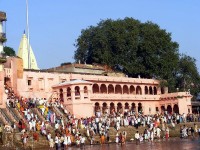
Maghe Sankranti is the beginning of the holy month of Magh, usually the mid of January. It brings an end to the ill-omened month of Poush (mid-december) when all religious ceremonies are forbidden. Even if it is considered the coldest day of the year, it marks the coming of warmer weather and better days of health and fortune. Maghe Sankranti is the beginning of the holy month of Magh, usually the mid of January.
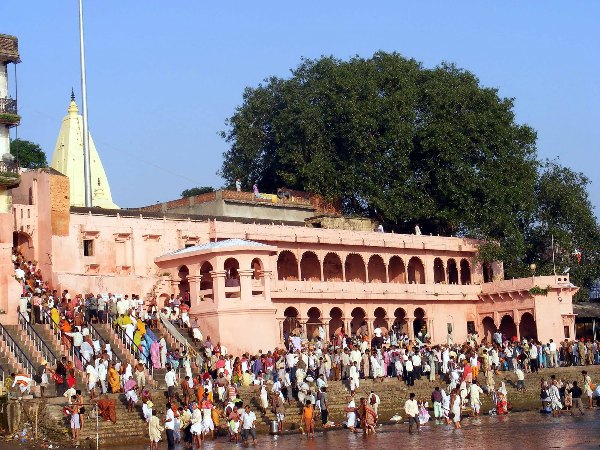
It brings an end to the ill-omened month of Poush (mid-december) when all religious ceremonies are forbidden. Even if it is considered the coldest day of the year, it marks the coming of warmer weather and better days of health and fortune. This day is said to be the most significant day for holy bathing despite the weather. This ritual usually takes place at the union of sacred rivers and streams. Sankhamole, on the banks of the holy Bagmati river, below Patan, is thought to be amongst the most sacred sites for this purpose, though there has been a decline in the fulfillment of this ritual in the recent years due to water pollution in the river. But people still go in the wee hours of dawn just to sprinkle themselves with the water. They pay homage to various deities specially the temple of Red Machindranath and Agima Ta.
You’ve dreamed of climbing Mount Everest. Many of us have, and when you think about Nepal, you usually lump the world’s tallest peak in with your thoughts. The thing is, unless you have a nice chunk of change (I’m talking about a hundred grand here) and a ton of patience (the lines to the summit are a travesty these days), you probably aren’t going to climb Sagarmatha, as the Nepalese call her, but that’s okay. There are plenty of things to do that are amazing (and safer) in this tiny Southeast Asia country just north of India, and we’re going to experience nine of them right now!
Aside from seeing the tallest peak in the world (planes fly LOWER than she is), there are some incredible sights, sounds, and experiences in this little gem north of India. What you’re going to find in Nepal is a part of the world unlike any other, filled with wonderfully friendly people living within a unique culture. Keep in mind that this is a less-developed nation, so you’ll want to take some health and safety precautions. This should not stop you, however, from visiting this amazing, amazing country! Trust me, once you’ve crossed these nine amazing things off of your list, you won’t regret not attempting an Everest summit!
Source: Venera Travel Blog

The Restaurant and Bar Association Nepal (REBAN) is going to organize the 16th street festival in Pokhara from December 28 to January 1.
Different cultural programmes and opera dances, adventurous and competitive programmes, photo exhibition among others would be organized on the occasion under the slogan ´eat, enjoy and dance on the road´.
The programme would be organized along the road section from Lakeside to Khahare of Pokhara, said Chau Bahadur Gurung, vice chair at the REBAN.
Source: MYREPUBLICA